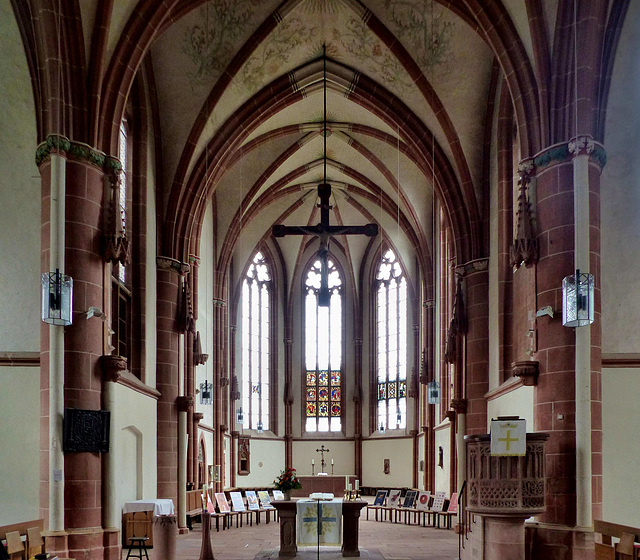Palermo - Sant'Agostino
Palermo - Sant'Agostino
Le Palais des Papes d'Avignon, Vaucluse (France)
Auxerre
Auxerre : cathédrale Saint-Etienne
Auxerre - abbaye Saint Germain
Asti - Collegiata di San Secondo
Asti - Cattedrale di Santa Maria Assunta
Statues and Vitrals of Notre Dame in Paris Cathedr…
Avignon - Palais des Papes
Avignon - Palais des Papes
117 1749ac Laon Belfries and Moke Up Added
P9264090ac Laon Cathedral North Silhouette
P9264129ac Snowing Gold
La Chaise-Dieu
La Chaise-Dieu
La Chaise-Dieu
La Chaise-Dieu
Women's rights.
Auxerre - Cathédrale Saint-Étienne
Ligny-le-Châtel - Saint-Pierre-et-Saint-Paul
Quasimodo dit : "Pourquoi n'ai-je pas été fait de…
Cathédrale primatiale Notre-Dame de l’Assomption d…
Frankenberg - Liebfrauenkirche
Frankenberg - Liebfrauenkirche
Frankenberg - Liebfrauenkirche
Frankenberg - Liebfrauenkirche
Notre-Dame de Paris
Sir Lawrence de Pavely and his wife
IMG 9085ac Mysore St. Philomena's Cathedral Choir…
IMG 9078bc Mysore St. Philomena's Cathedral Basili…
Évora, Basilica Sé, Ouro e obscurantismo
Évora, Basilica Sé, Claustro
Marburg - Elisabethkirche
Marburg - Elisabethkirche
Marburg - Elisabethkirche
Marburg - Elisabethkirche
Marburg - Elisabethkirche
Portail gothique du Couvent de Graça, XIIIe siècle…
Cologne - Minoritenkirche
Cologne - St. Pantaleon
Cologne - Cathedral
Cologne - Cathedral
la belle lumière ♥ ♥ ♥
Ornements gothiques de la Maison du Chamarier, rue…
Location
See also...
Keywords
Authorizations, license
-
Visible by: Everyone -
All rights reserved
-
316 visits
Frankenberg - Liebfrauenkirche


In medieval times the area around was fought for by different parties. In 1232 Konrad of Thuringia, brother in law of Saint Elisabeth, had a fortified complex built here, that dominated the entire middle valley of the Eder river. There were a castle and an ecclesiastical area. Immediately the city was built with a large marketplace. It was obviously planned to have a strong bastion and to take advantage of the favourable traffic conditions.
The inhabitants of the new town were composed of the inhabitants of the surrounding villages and hamlets, who were resettled or voluntarily left their old homes. Frankenberg was soon surrounded by a mighty wall. Of the 25 towers and gates of the old town, only one still exists, the five city gates have disappeared.
The Liebfrauenkirche was built in 1286 according to the model of St. Elizabeth's Church in Marburg, one of the very first churches erected in Germany in Gothic style. It is believed that the entire "Bauhütte" moved from Marburg to Frankenberg to work here at the request of Landgrave Henry I , the grandson of St. Elizabeth.
In 1476, when a fire destroyed the entire town, the Liebfrauenkirche also burned out completely, which led to the loss of the precious original equipment. The church got rebuilt.
After the Reformation, the church became a Protestant church.
An iconoclasm started, under Landgrave Moritz , who, due to his Reformed confession, rigorously enforced the biblical prohibition of images. During this fury statues of saints and other Christian representations and artistic treasures were irretrievably lost in 1606.
The choir by master builder Tyle vron Frankenberg was completed in 1380
The inhabitants of the new town were composed of the inhabitants of the surrounding villages and hamlets, who were resettled or voluntarily left their old homes. Frankenberg was soon surrounded by a mighty wall. Of the 25 towers and gates of the old town, only one still exists, the five city gates have disappeared.
The Liebfrauenkirche was built in 1286 according to the model of St. Elizabeth's Church in Marburg, one of the very first churches erected in Germany in Gothic style. It is believed that the entire "Bauhütte" moved from Marburg to Frankenberg to work here at the request of Landgrave Henry I , the grandson of St. Elizabeth.
In 1476, when a fire destroyed the entire town, the Liebfrauenkirche also burned out completely, which led to the loss of the precious original equipment. The church got rebuilt.
After the Reformation, the church became a Protestant church.
An iconoclasm started, under Landgrave Moritz , who, due to his Reformed confession, rigorously enforced the biblical prohibition of images. During this fury statues of saints and other Christian representations and artistic treasures were irretrievably lost in 1606.
The choir by master builder Tyle vron Frankenberg was completed in 1380
- Keyboard shortcuts:
Jump to top
RSS feed- Latest comments - Subscribe to the comment feeds of this photo
- ipernity © 2007-2024
- Help & Contact
|
Club news
|
About ipernity
|
History |
ipernity Club & Prices |
Guide of good conduct
Donate | Group guidelines | Privacy policy | Terms of use | Statutes | In memoria -
Facebook
Twitter

Sign-in to write a comment.